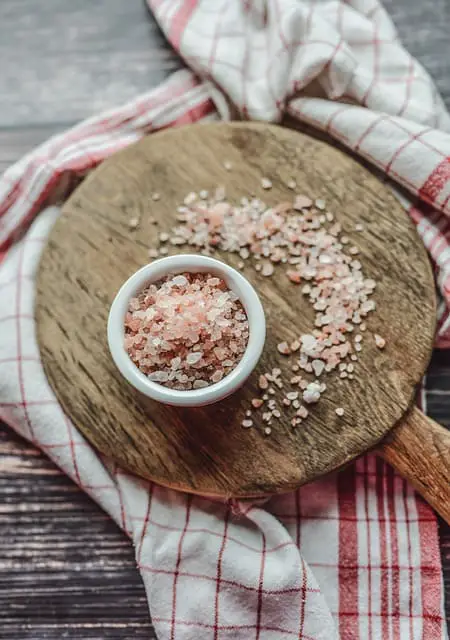You might be surprised to learn that not only are there different kinds of salt, some dishes require a specific type for optimal taste. So if you’re only used to buying regular cheap table salt, this article will discuss other options to consider for your cooking.
There are several different kinds of salt available for cooking, each with its own unique characteristics and purposes. Below we’ll discuss some common types of salt that you can consider using depending on the dish.
Types Of Salt And When To Use Them
- Table Salt: This is the most common type of salt found in households. It is highly refined and typically contains additives to prevent clumping. Table salt has small, fine granules and is often used in cooking and baking.
- Sea Salt: Sea salt is produced by evaporating seawater. It is minimally processed and retains trace minerals from the sea, giving it a slightly different flavor compared to table salt. Sea salt comes in different varieties such as fine, coarse, or flaky, and is commonly used as a finishing salt or for adding texture and flavor to dishes.
- Kosher Salt: Kosher salt is a coarse-grained salt that is commonly used in kosher cooking. It has larger, irregularly shaped crystals and does not contain additives like iodine. Kosher salt is favored by chefs for its ability to adhere well to food surfaces and is often used for seasoning meat.
- Himalayan Pink Salt: This salt is mined from the Khewra Salt Mine in the Himalayan region and is known for its distinctive pink color. It contains trace minerals and is often considered a more natural and less processed alternative to table salt. Himalayan pink salt can be used in cooking, as a finishing salt, or for decorative purposes.
- Rock Salt: Rock salt is a large-grained salt that is commonly used for making homemade ice cream or for de-icing roads during winter. It is not typically used for everyday cooking or seasoning.
- Flavored Salt: Flavored salts are created by infusing salt with various herbs, spices, or other ingredients to add unique flavors. Examples include garlic salt, truffle salt, or smoked salt. These salts can be used to enhance the taste of dishes or as a finishing touch.
It’s important to note that different types of salt may have varying levels of saltiness, so it’s advisable to adjust the amount used in recipes accordingly. Additionally, certain types of salt may have different textures and dissolving rates, which can affect their suitability for specific cooking techniques.
Salt Comparison By Type
Here’s an expanded table comparing the six types of salt from a culinary and baking perspective, including their taste profiles:
| Type of Salt | Culinary Use | Baking Use | Taste Profile |
|---|---|---|---|
| Table Salt | General cooking and seasoning | Baking recipes that specify table salt | Salty, neutral flavor |
| Sea Salt | Finishing salt, seasoning, and garnishing | Breads, cookies, and desserts | Clean, briny, slightly mineral flavor |
| Kosher Salt | Seasoning meats, brining | Baking recipes that specify kosher salt | Mild, less salty than table salt |
| Himalayan Pink Salt | Finishing salt, decorative purposes | Breads, cookies, and desserts | Subtle, delicate, slightly sweet with a hint of mineral notes |
| Rock Salt | Making ice cream | Not typically used in baking | Salty, large crystals that dissolve slowly. As such, often used for de-icing roads and other industrial uses |
| Flavored Salt | Enhancing flavors, finishing touch | Certain desserts and specialty baked goods | Varies based on the flavor infusion (e.g., garlic, truffle, etc.) |
It’s important to note that taste can vary slightly depending on the specific brand or source of the salt. Additionally, personal preference plays a role, and different salt types may be preferred for specific dishes or desired flavor profiles.

